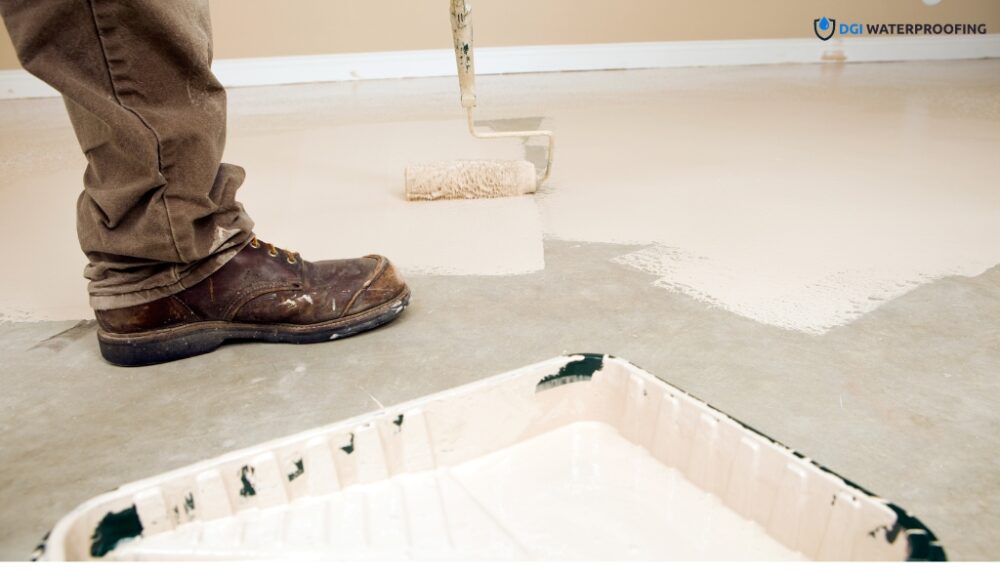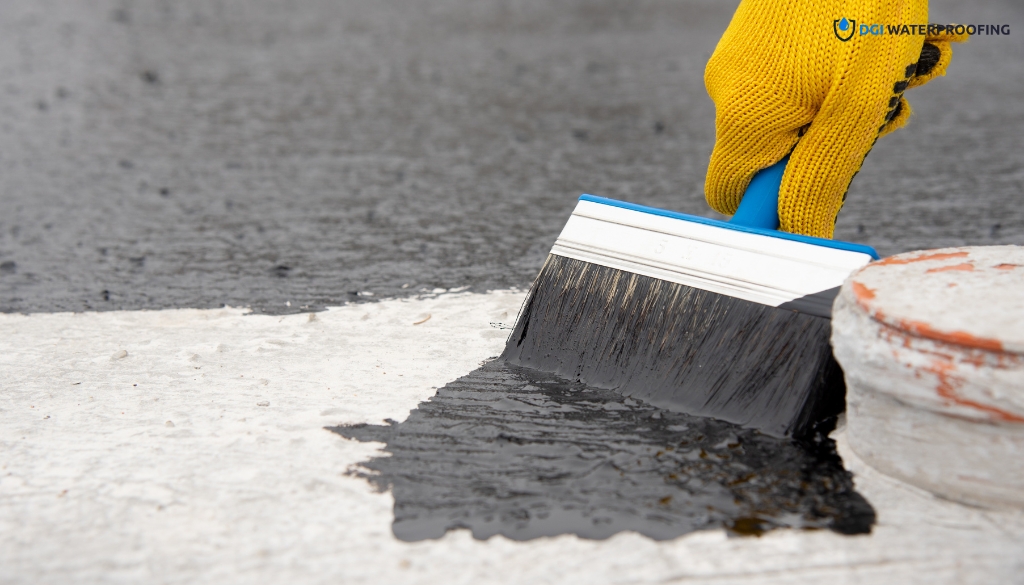Basements are a common feature in many homes across Canada. While they can serve as additional living spaces or storage areas, they are also prone to water damage. To protect your basement from water damage, it is necessary to waterproof it. However, there are many misconceptions surrounding basement waterproofing that can cause homeowners to make uninformed decisions. In this section, we will debunk some common myths about waterproofing your basement and provide you with the facts you need to make informed decisions.
Myth 1: Waterproofing is only necessary for homes with severe water issues
When it comes to basement waterproofing, there are many misconceptions. One of the most common is that waterproofing is only necessary for homes with severe water issues. This belief separates fact from fiction. In reality, waterproofing is necessary for all basements, regardless of their current water situation.
Separating fact from fiction
If you think that waterproofing your basement is only necessary when there are noticeable water issues, then you are likely believing one of the many false beliefs about basement waterproofing. The truth is, basement waterproofing helps prevent future water damage, which can be costly and frustrating to deal with.
Even minor water infiltration can cause significant damage to your home, including mold growth, structural damage, and reduced indoor air quality. Basement waterproofing is an effective way to prevent these issues and keep your home safe and healthy.
False beliefs about basement waterproofing
These false beliefs may result from a lack of understanding about how basement waterproofing works. Many people believe that basement waterproofing only involves addressing visible cracks or applying a coat of waterproof paint to walls. However, effective waterproofing is a complex process that requires specialized knowledge and expertise.
To separate fact from fiction, it’s essential to understand that basement waterproofing is an investment in the long-term health of your home. By working with trusted waterproofing professionals, you can ensure that your basement is properly protected from water damage, regardless of its current condition.
Don’t be fooled by the myths and misconceptions surrounding basement waterproofing. Contact our team of experts today to learn how we can help you protect your home from water damage for years to come.
Myth 2: Waterproofing is a DIY project
There is a common misconception that waterproofing can be done as a DIY project. However, this is far from the truth, and attempting to waterproof your basement on your own could lead to costly mistakes in the long run.
Waterproofing is a complex process that requires specialized knowledge and expertise. Professionals have the experience, training, and equipment needed to identify the root cause of your basement’s water issues and provide effective, long-term solutions.
It’s important to understand that not all waterproofing products and methods are created equal. Professionals can assess your basement’s unique needs and recommend the most appropriate waterproofing solutions to keep your home safe and dry.
Additionally, professional waterproofing services often come with warranties that cover any necessary repairs in the future, providing peace of mind for homeowners who want to protect their investment.
Myth 3: Waterproofing is a one-time solution
One of the most common misconceptions about basement waterproofing is that it is a one-time solution. Some homeowners believe that once they waterproof their basement, they never have to worry about water issues again. Unfortunately, this is not the case.
While waterproofing can provide long-lasting protection for your basement, it is not a foolproof solution. Over time, the effectiveness of your waterproofing system can decline due to various factors such as foundation settling or cracks in the walls.
Regular inspections are essential to ensure that your waterproofing system is still working correctly. These inspections can identify any issues that may have developed and catch them before they turn into more significant problems.
Myth vs. Truth
| Myth | Truth |
|---|---|
| Waterproofing is a one-time solution. | Regular inspections and maintenance are necessary to ensure the continued effectiveness of your waterproofing system. |
It is essential to understand that waterproofing is not a one-time solution. To ensure that your basement remains dry and protected from water damage, ongoing maintenance is necessary.
Myth 4: Paint can waterproof your basement
Another common misconception is that painting the walls of your basement with waterproof paint can keep your basement dry. However, paint alone cannot provide effective waterproofing for your basement. While it can help to control minor dampness, it is not a long-term solution to protect your basement from water infiltration.
The reality is that water can still seep through walls and floors, causing permanent damage to your property. You need to take a comprehensive approach to basement waterproofing to ensure that your home remains dry and protected.
The limitations of paint as a waterproofing solution make it essential to use specialized techniques for basement waterproofing. Applying a waterproof coating is just one part of the process. Effective waterproofing also involves addressing issues with drainage, repairing cracks, and preventing water from entering your home’s foundation.
To truly protect your home from future water damage, it’s essential to invest in professional basement waterproofing solutions. Our experts at (647) 483-2455 can help you understand the most effective methods to keep your basement dry.

Myth 5: Waterproofing is too expensive
One of the most common misconceptions about waterproofing basements is that it is too expensive. However, the cost of waterproofing is essential to consider compared to the potential cost of water damage. A waterproofed basement can prevent costly repairs, health hazards, and inconvenience.
The cost of waterproofing your basement depends on several factors, including the size and condition of your basement. Other factors that affect the cost are the type of waterproofing solution you choose, the extent of the damage, and the type of insulation and drainage system required.
While it may seem like an expensive process, it is a worthwhile long-term investment. The right professional waterproofing company can help you choose the best solution for your budget and needs.
Cost-effective solutions
If you are concerned about the cost of waterproofing, there are cost-effective solutions available. One of the most effective solutions for basement waterproofing is interior waterproofing. This method is more affordable than exterior waterproofing, which requires excavation of the foundation.
Another cost-effective solution is the installation of a sump pump. A sump pump is a relatively inexpensive addition to your waterproofing system that can prevent water damage by pumping excess water out of your basement.
Remember that the cost of waterproofing your basement is a necessary investment to protect your home and your family. Fortunately, there are many affordable and effective options available, and a professional waterproofing company can help you choose the best fit for your budget and needs.
Myth 6: Waterproofing only involves exterior solutions
It is a common misconception among homeowners that basement waterproofing only involves exterior solutions like excavating the foundation. However, this is not true. There are various interior waterproofing methods available that are just as effective at protecting your basement.
One such solution is interior drainage systems, which collect and redirect water away from your basement walls and flooring. These systems are installed along the interior perimeter of your basement and can effectively prevent water infiltration.
Another popular interior waterproofing solution is the installation of a sump pump. Sump pumps work by collecting water that has accumulated in the sump basin and pumping it outside of your home. This can be an effective solution for preventing basement flooding and water damage.
Key Takeaways:
- Basement waterproofing involves both exterior and interior solutions.
- Interior solutions such as drainage systems and sump pumps can effectively prevent water infiltration.
The Truth About Basement Waterproofing
Now that we’ve separated fact from fiction, we hope you have a better understanding of common misconceptions about waterproofing your basement. It’s important to remember that basement waterproofing is not just for those with severe water problems. Even if you don’t currently have any issues, waterproofing can help prevent future water damage.
Another important point to consider is that waterproofing is not a DIY project. It requires specialized knowledge and expertise to ensure that the waterproofing is done effectively and lasts for a long time. Additionally, waterproofing is not a one-time solution. Regular inspections and maintenance are necessary to ensure continued effectiveness.
The idea that simply painting your basement walls with waterproof paint can provide adequate protection is also a myth. While paint certainly helps, it’s not enough to waterproof your basement. Finally, while cost is a concern for many homeowners, the cost of waterproofing is a worthwhile investment when you consider the potential damage that can occur without it.
Get Expert Help for Your Basement Waterproofing Needs
Don’t let these common myths about basement waterproofing discourage you from protecting your home. There are many effective and cost-efficient solutions available. The key is to work with a reliable and experienced professional who can help identify and address your specific waterproofing needs.
If you have any further questions or concerns about waterproofing your basement, don’t hesitate to reach out to our experts at (647) 483-2455. We’re here to help you make informed decisions and keep your basement safe and dry for years to come.
